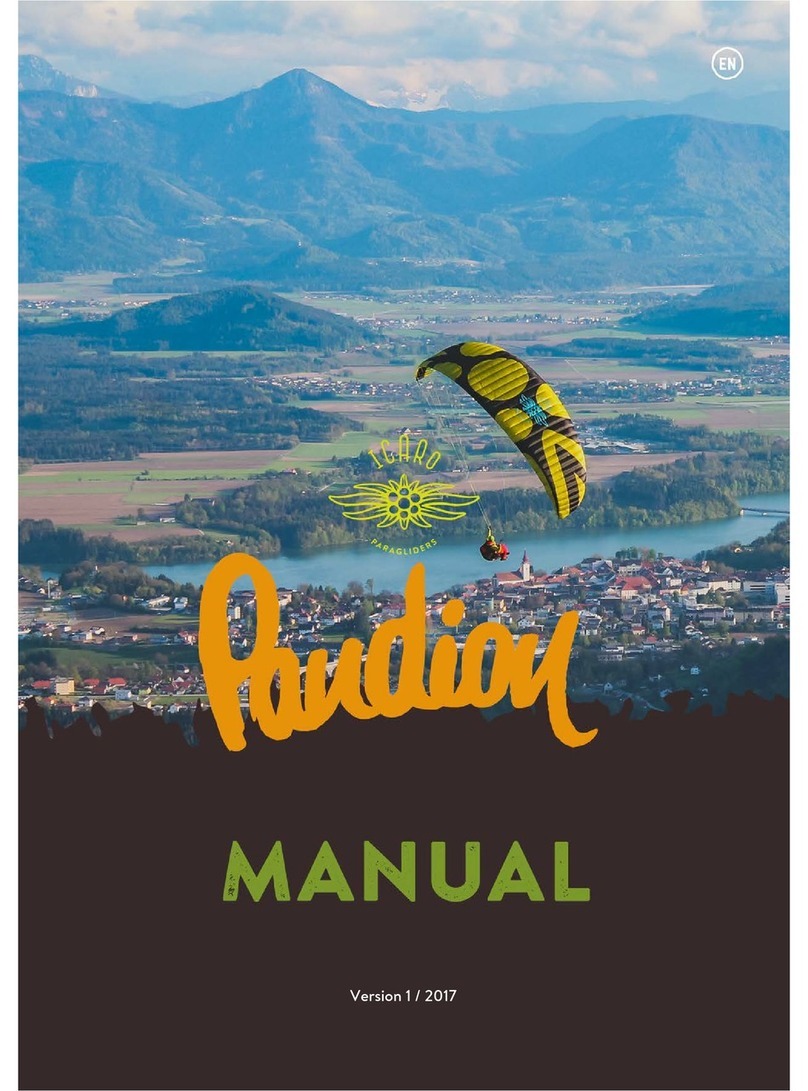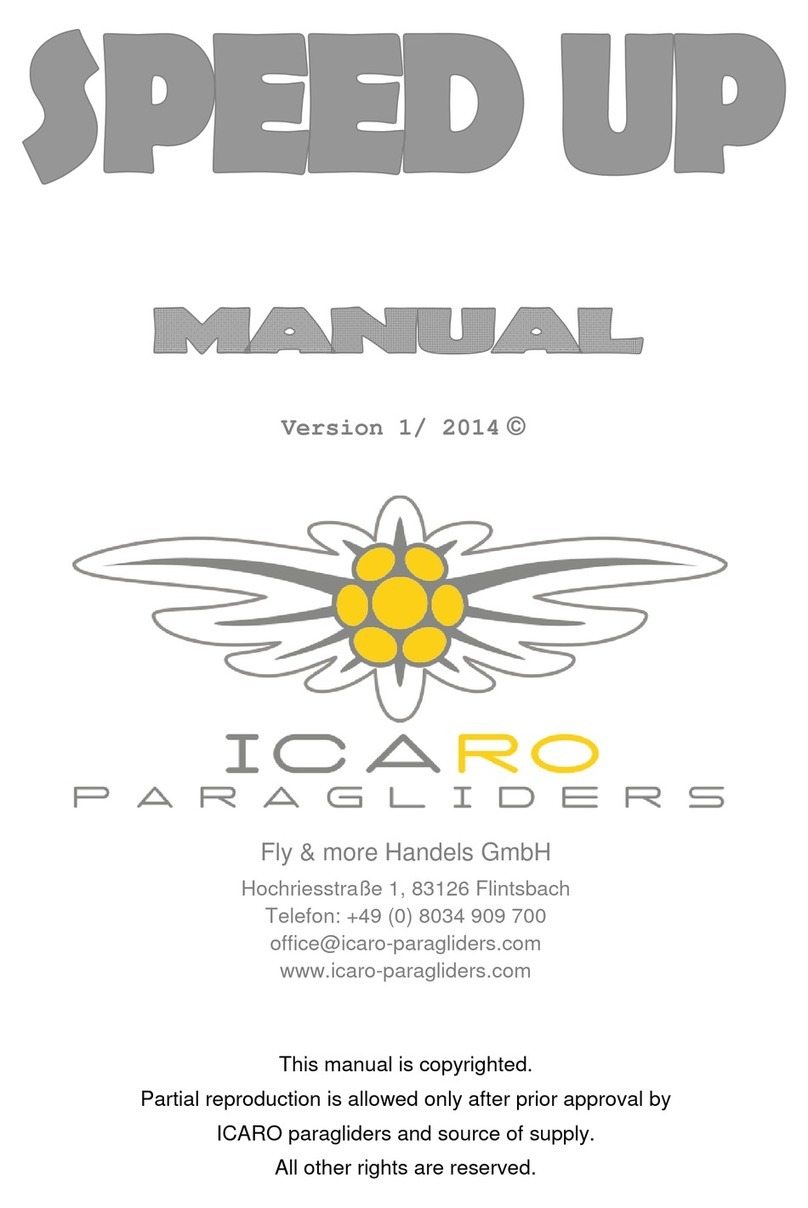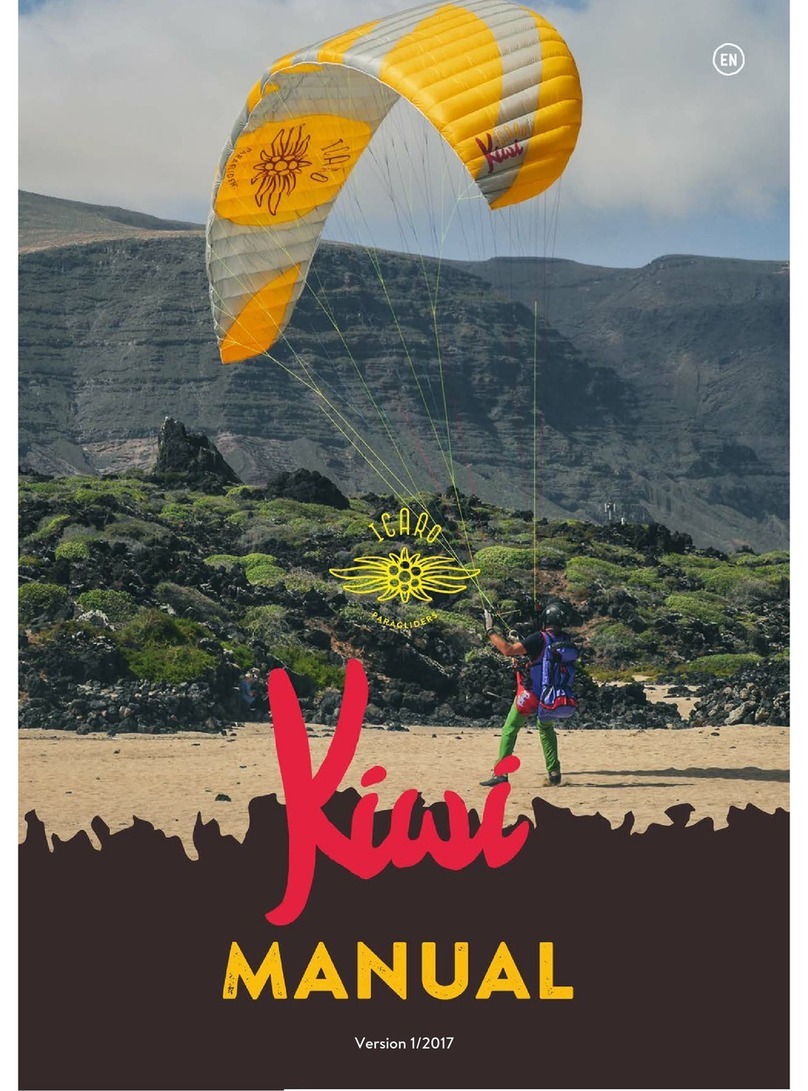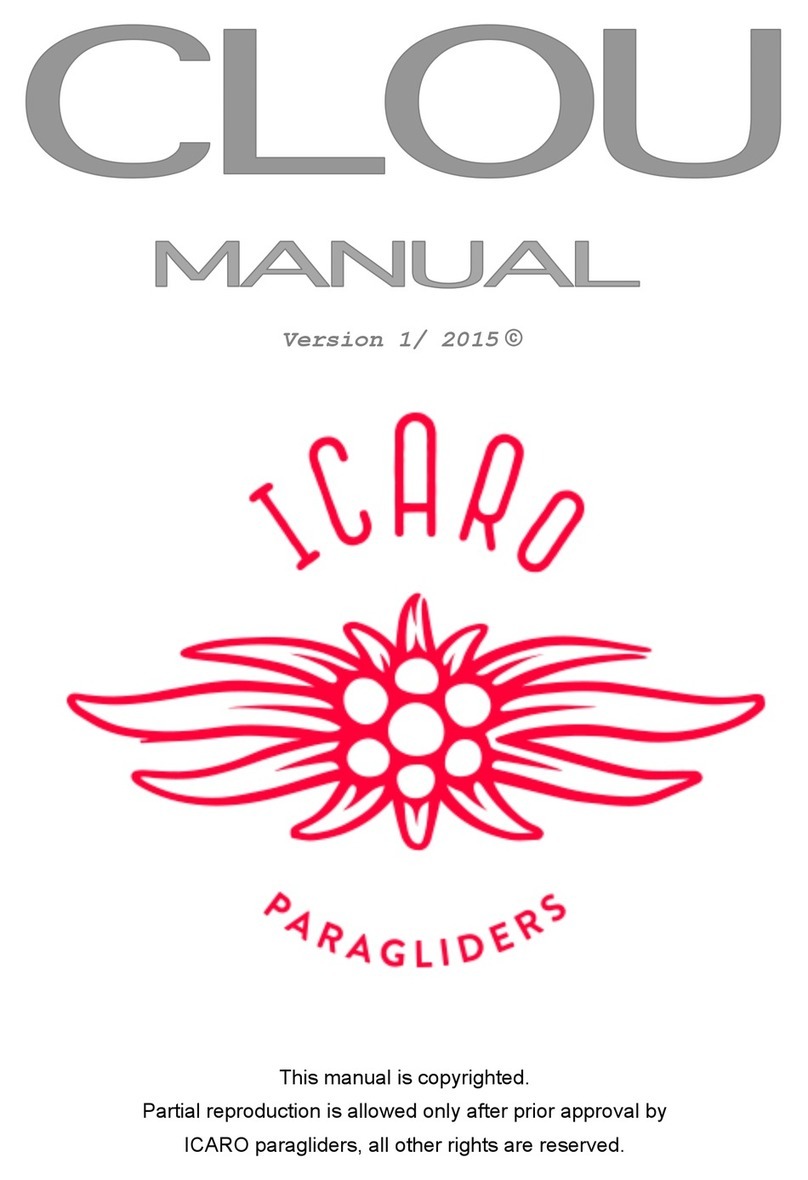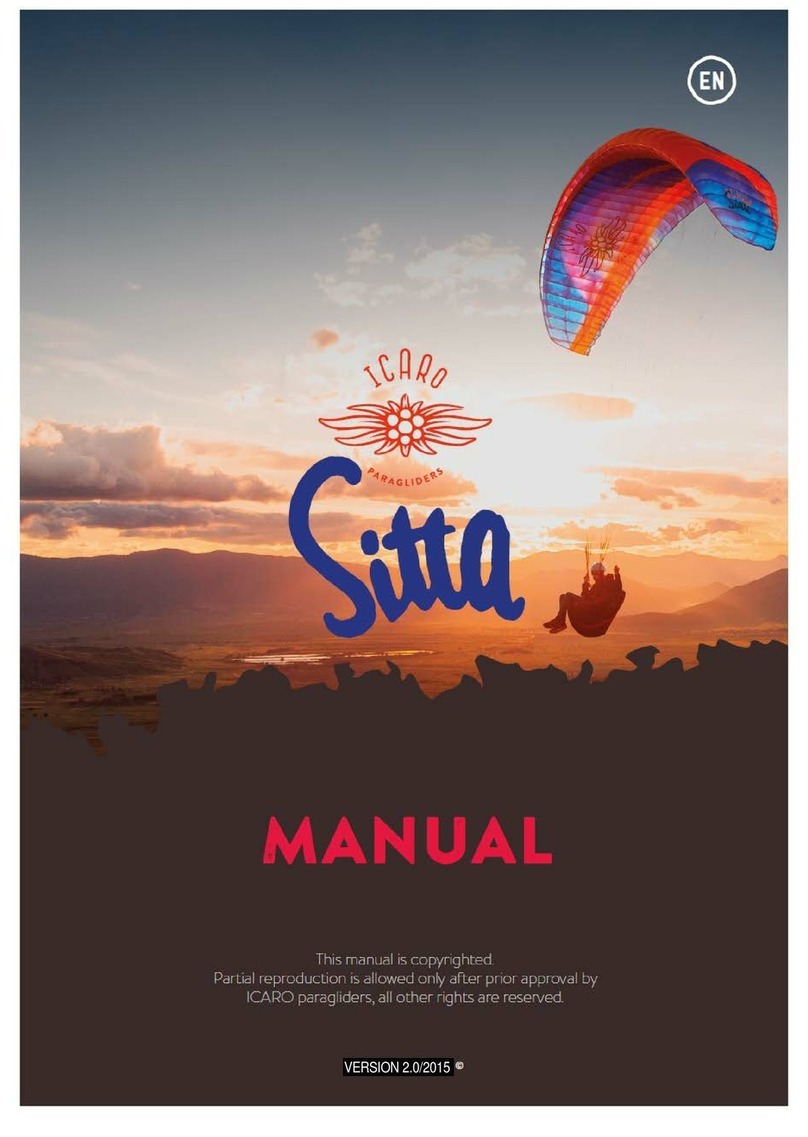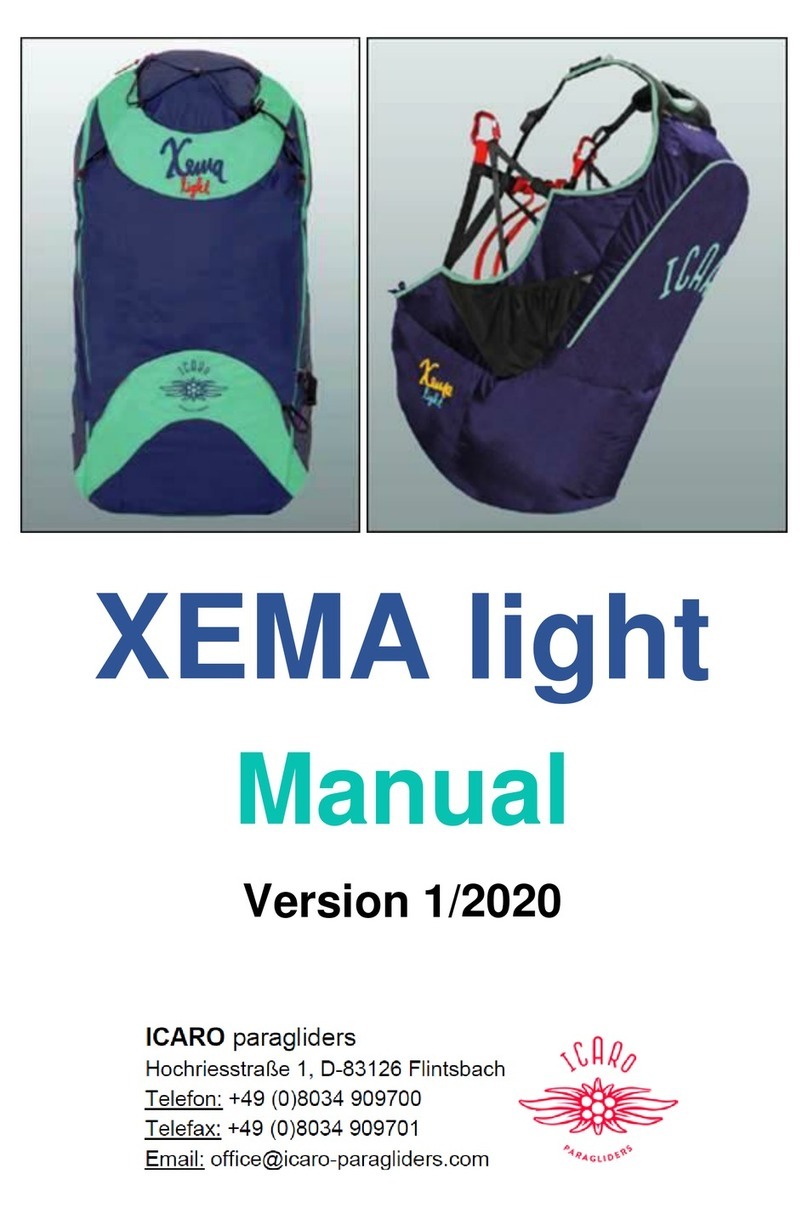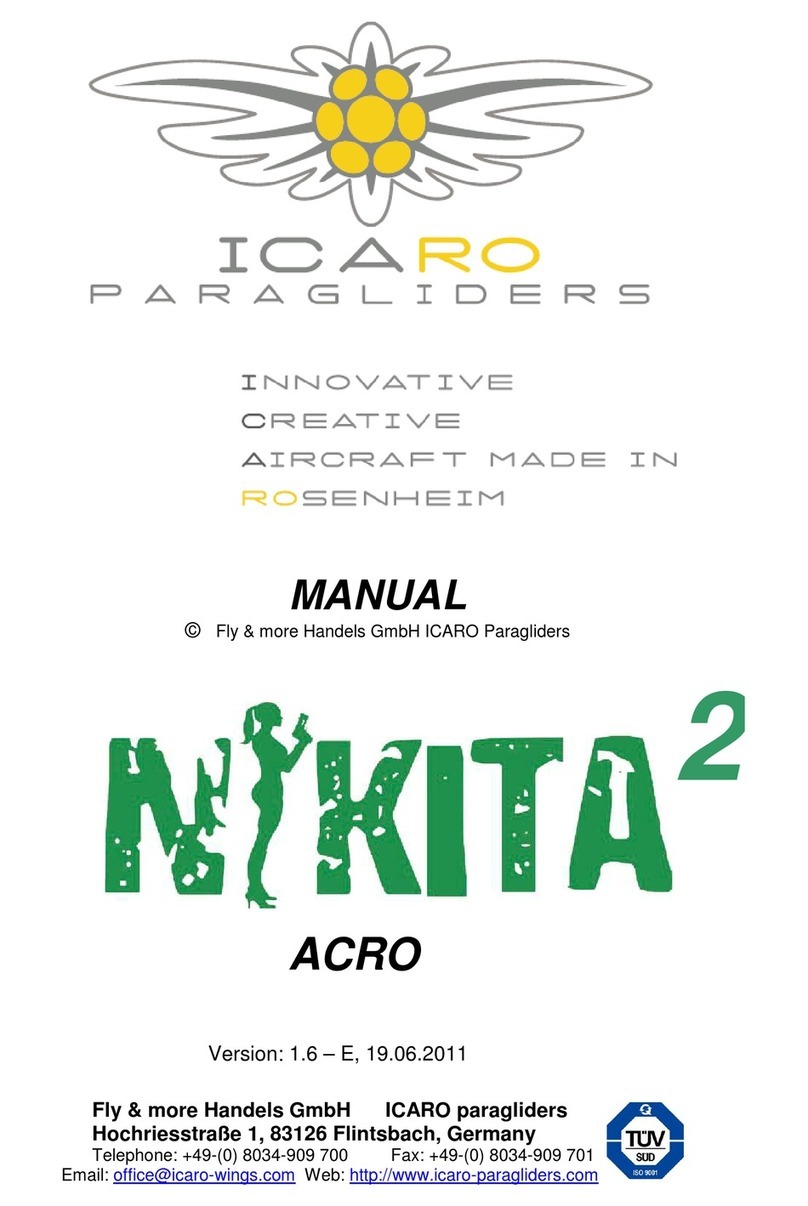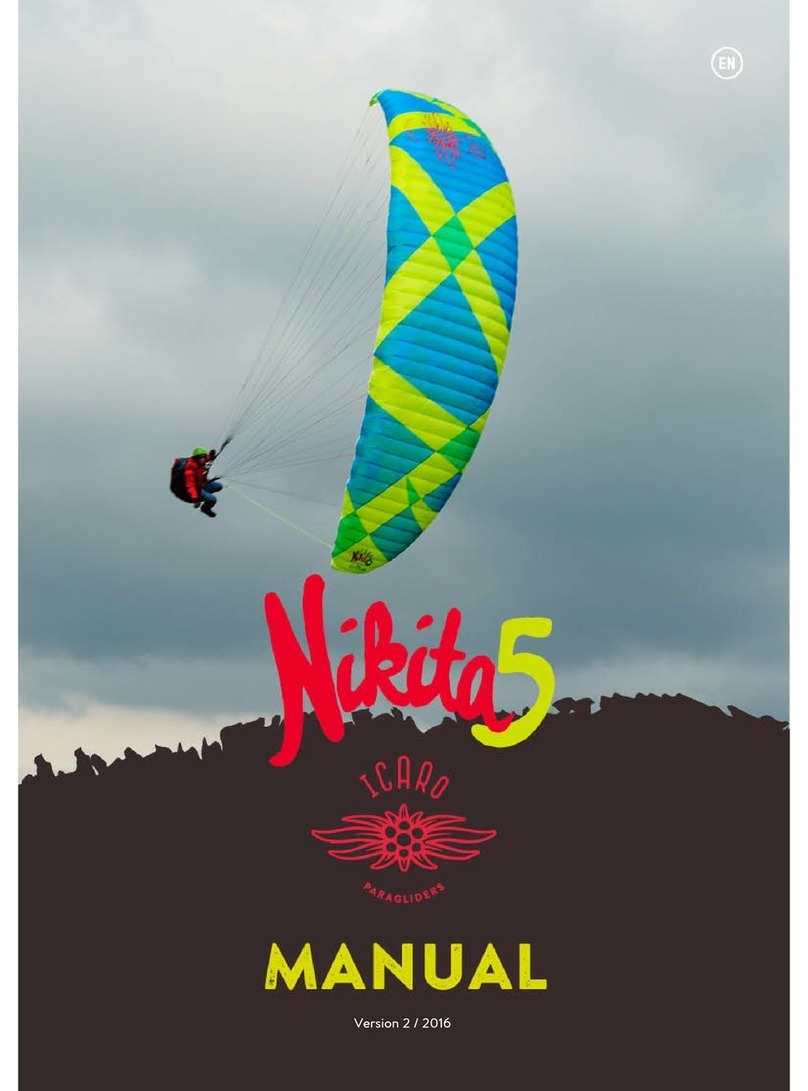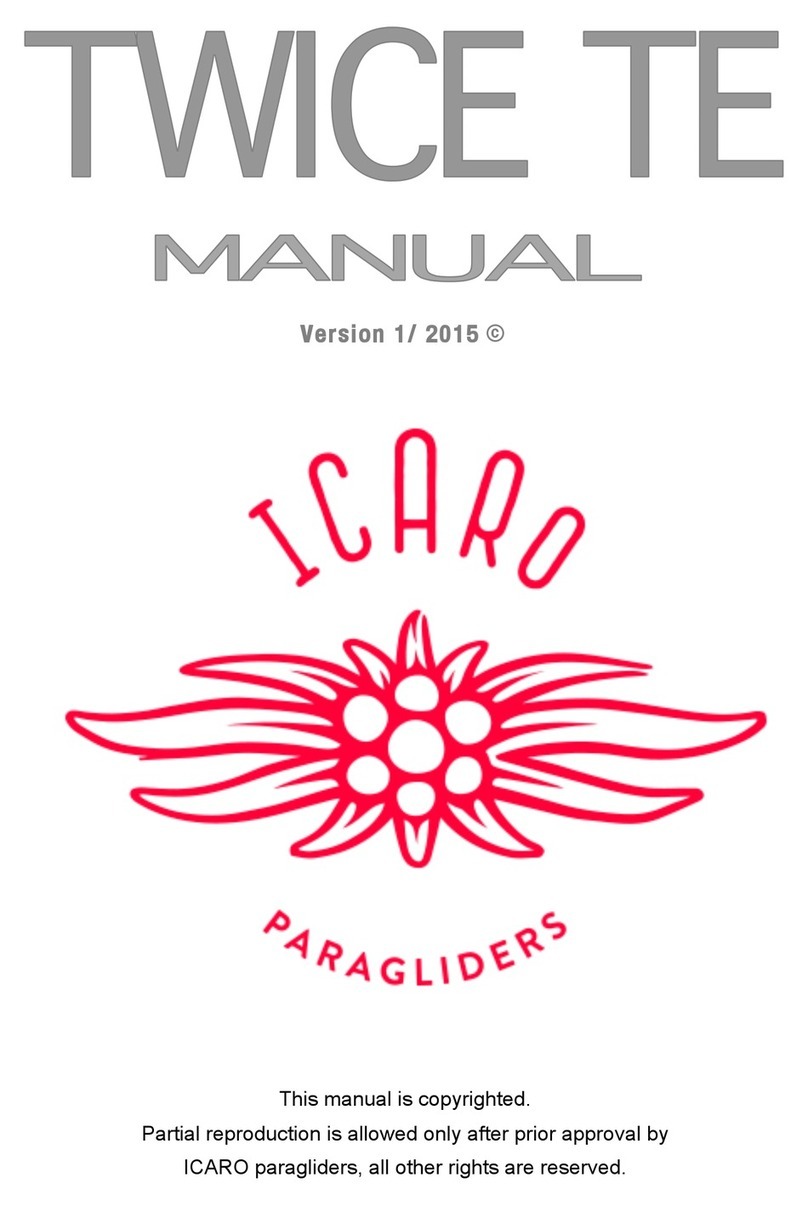
Page 6
Version 1/2022
experienced pilots who prefer a seated flight position will be enthusiastic when
they have made their first flights.
The XEMA LIGHT 2 harness is available only with Get-Up straps which is the
lightest forget-proof safety system for closing a harness.
The red SOS- label with white lettering is readily visible in a pocket on the right
shoulder -strap padding. It is easy to pull out, and it is fastened to the harness to
prevent it from being lost.
On the back of this label, you can write the information that you think should be
given to rescue personnel in case of accident.
The XEMA LIGHT 2 has a spacious dorsal pocket and two side pockets,
positioned respectively on the sides of the harness with zips to close them.
The right and left side of the main suspension are marked by eyelets in different
colors. The carabiners are made of aluminum and loadable up to 2.4 tons.
Speed system
After having adjusted the sitting position to the optimum configuration, the
accelerator must be adjusted. This harness is compatible with all normal types of
speed-system accelerators.
The elastic in front of the board that
retains the speed-bar keeps the handle
of your reserve parachute from
becoming tangled in the event it is
deployed. The speed bar cords should
be passed first through the rings fixed
to the elastic in front of the board, then
in the harness through the eyelets near
the front corners of the seat, then
through the pulleys located near the rear corners of the seat.
To adjust the system correctly, the pilot must adopt a flying position in the harness,
suspended from a flight simulator, and hook into the risers of the paraglider.
Another person then helps by supporting the risers, so the pilot can adjust the
length of the speed-system cords. When no pressure is exerted on the speed bar,
the bar must be at a distance no greater than 10 cm below the front of the
harness.
If the speed-bar cord is too short, it could cause a constant force on the bar
during flight, so that the accelerator is unintentionally engaged at all times in
flight.
It is safest to take off with the speed-bar a little
too long, progressively shortening it during the
next flights.
To retain the speed-bar during the take-off run
use the straps located in front of the seat that
close with magnets. This system also allows you
to use the speed-bar straps with adjustment of
the central ropes.
Remember that all adjustments have to be performed symmetrically, on both
sides.
